ON THE TRACK OF THE SNOWSHOE HARE
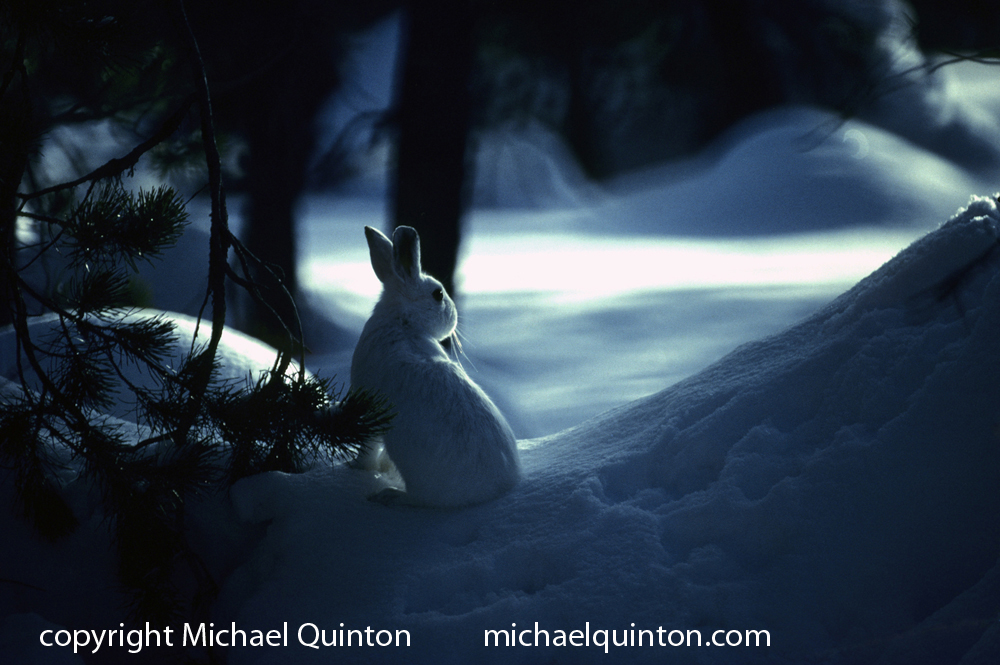 A snowshoe hare watches his backtrail.
A snowshoe hare watches his backtrail.
In the far north snowshoe hares are trapped in an eternal cycle. A ten year cycle of life and death, of peak and crash, of predator and prey. Currently snowshoes are at the bottom of their population cycle. Predator species like the northern goshawk, northern hawk owl, and lynx crash a year or two after the hares. When the hare population is low they can still be found in bunny patches, small pockets of prime habitat. Thickets of mixed forests, spruce, poplar and willow are sanctuaries where a few hares somehow manage to survive extremely heavy pressure from predators. In lodgepole forests of eastern Idaho, my old stompin grounds, the snowshoe hares did not seem to go through the extreme population peak and crash.
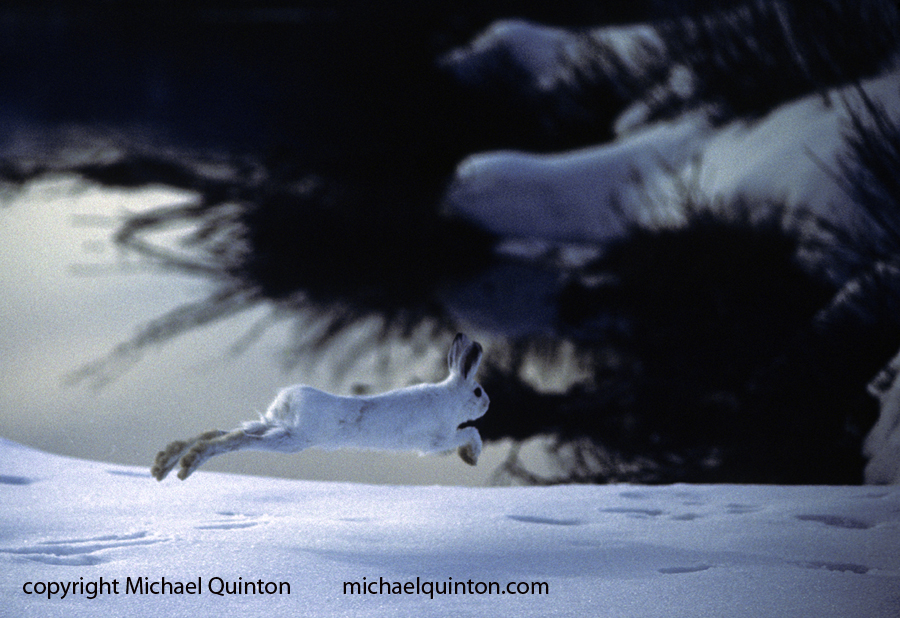 With huge hind feet, an Idaho snowshoe can literally fly through deep powder snow.
With huge hind feet, an Idaho snowshoe can literally fly through deep powder snow.
As daylight increases, intensifies in late January, it’s time to get out of the cabin, strap on a pair of snowshoes and make tracks. The days are short but the quality of light is as good as it can get. Following wildlife tracks is one of my favorite winter activities, and the best way to get pictures of snowshoe hare in winter.
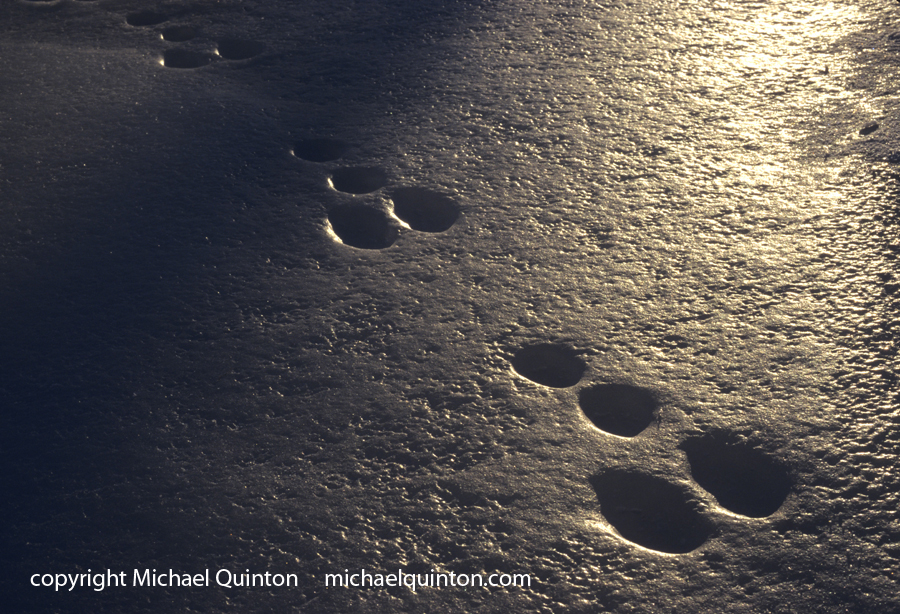 Snowshoe tracks in ice. Overflow from a nearby creek saturated the snow pack, then froze.
Snowshoe tracks in ice. Overflow from a nearby creek saturated the snow pack, then froze.
Make a circuit through a bunny patch. Look for droppings, clipped pine or spruce boughs, girdled willows. Go slowly and scan ahead for hares sitting in their forms, daybeds in the snow. Watch for their fresh tracks where they have bound away as you approached. Follow the running tracks, carefully walking to their side so you don’t destroy them. This is important when their tracks gets confusing. You can then go back to unravel their trail. The hares habit is to circle back, often returning to their original form. After jumping the hares a few times they begin to wait and hide from you. Their camouflage is near perfect and they will rely on it. Move slowly into camera range, not directly, but at an angle that brings you closer. In a short time the snowshoes will grow accustomed to your presence, even feeding without being disturbed.
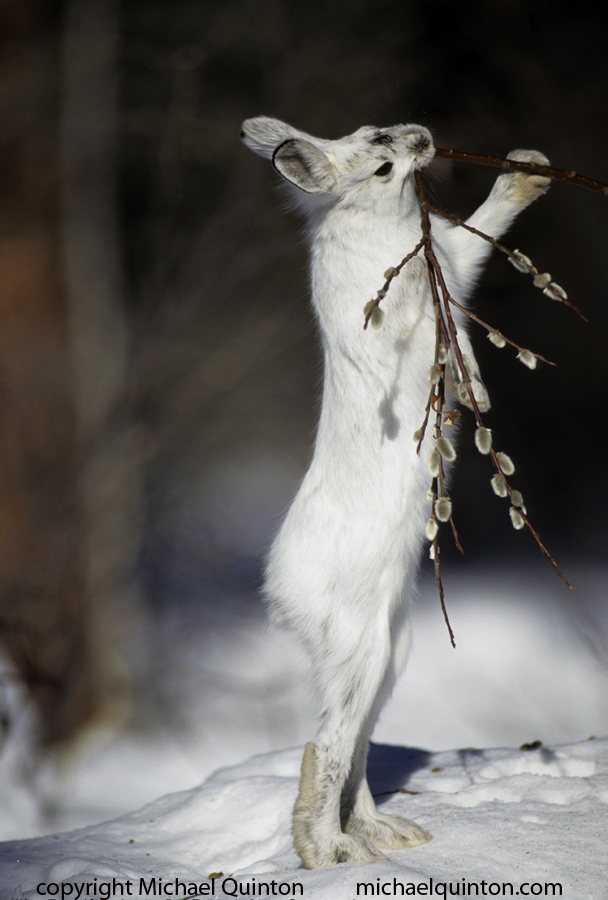 Standing on tip toes, a snowshoe nips a stem of pussy willows in interior Alaska.
Standing on tip toes, a snowshoe nips a stem of pussy willows in interior Alaska.
Once I was hot on the track of a hare that kept running off just as I eased close enough for photographs. Suddenly the hare was running straight back to me making great leaps through the deep powder. On his tail was a big northern goshawk. The hare and the goshawk arrived where I stood at the same time. Big, yellow, talon tipped feet slammed into the hare inches in front of my snowshoes.
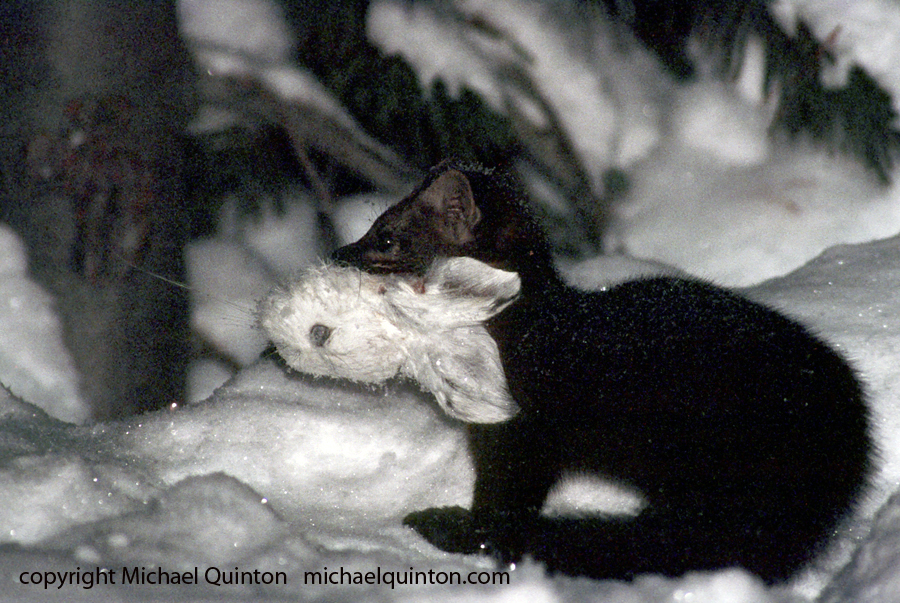 A marten butchering a snowshoe hare, carries its head to a nearby cache.
A marten butchering a snowshoe hare, carries its head to a nearby cache.
Watch your exposures, it’s easy to under expose the snow colored hares. Be sure to take a light reading, not of the white hares directly but something middle toned in the same light as your subject, such as the gray bark of willows. Then bracket, if you are one of those endangered traditionalists still rewinding film, or check your histogram to make sure your not burning out the highlights.
Michael Quinton
